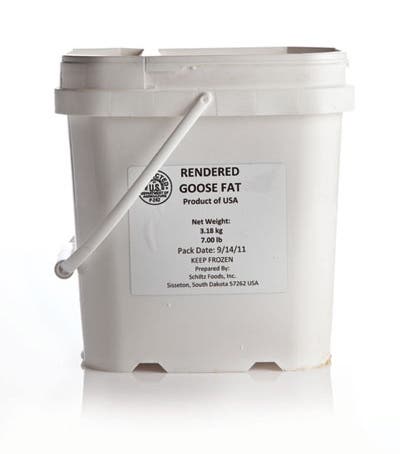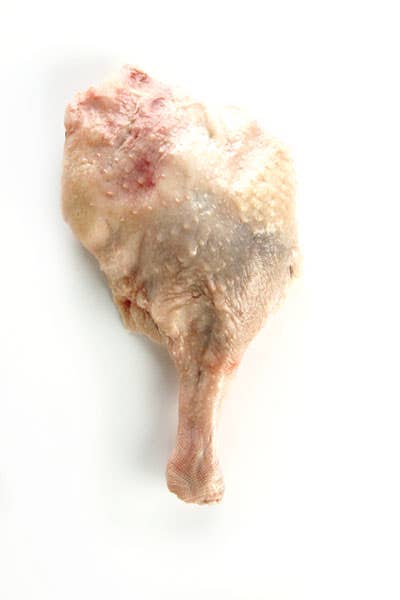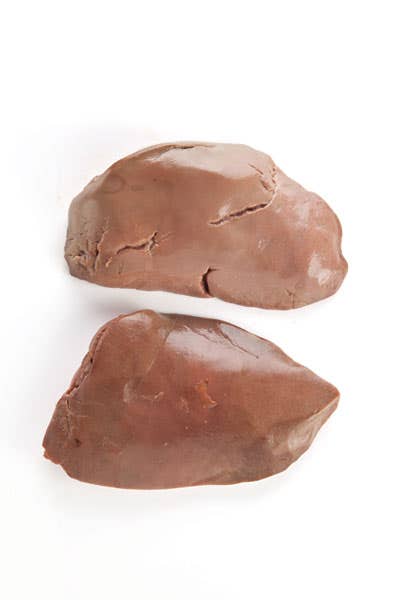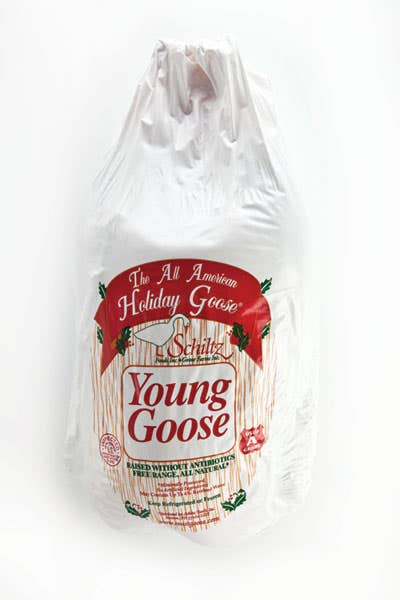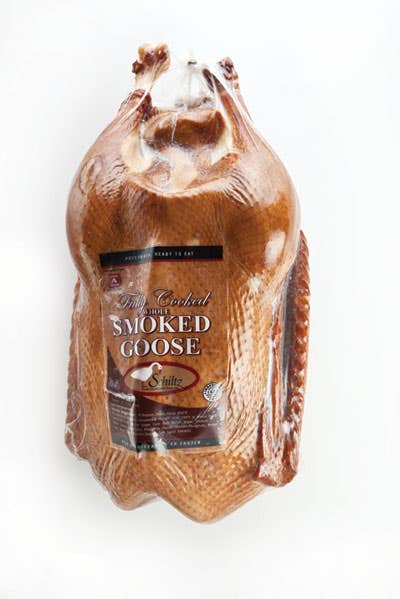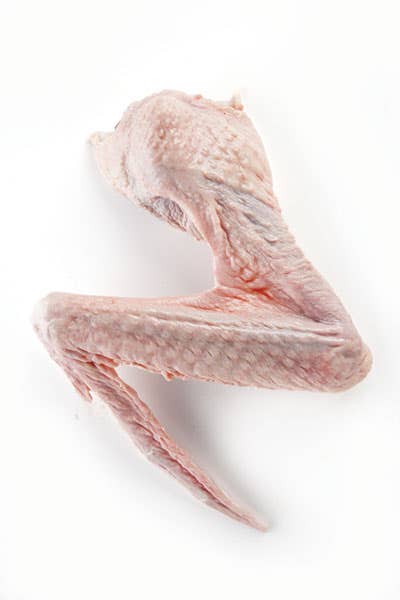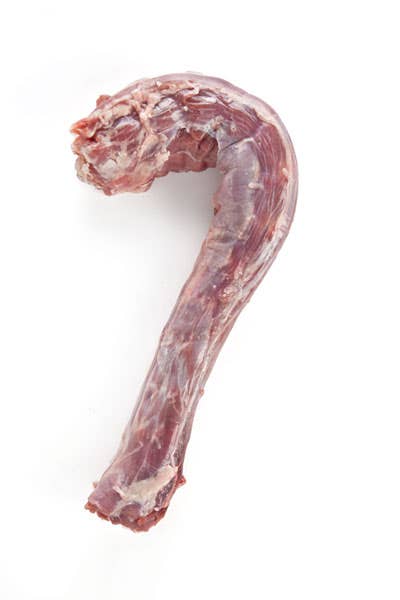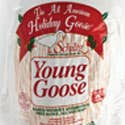
The Whole Goose
A guide to goose parts and how to cook with them.
Fat
Rendered at home–simply a matter of capturing and straining what ends up in the pan after cooking goose–or purchased in a tub, goose fat will keep in the refrigerator for up to six months. Flavorful, with a high smoke point, it’s especially good for frying potatoes and other root vegetables. It’s also delicious in baked goods, such as popovers. See the recipe for Rosemary Popovers » Back To: The Whole Goose: A Guide To Cooking With Goose »
Leg Quarters
The succulent leg and thigh portion of the goose is perfect for making confit. Schiltz also recommends roasting leg quarters on their own, which takes a fraction of the time required to roast an entire bird. See the recipe for Goose Confit and Fig Salad » Back To: The Whole Goose: A Guide To Cooking With Goose »
Liver
Goose liver is a classic ingredient in terrines; simply pan-fried and seasoned with salt and pepper, it makes a delicious main course in itself. The fattier Late Harvest livers sold by Schiltz are a humane alternative to foie gras, produced without force-feeding the birds. See the recipe for Goose Liver Terrines » Back To: The Whole Goose: A Guide To Cooking With Goose »
Whole Goose:
A whole roast goose makes a grand main course for a festive meal. The bird is 100 percent dark meat, richer than turkey and more flavorful. The leg meat is particularly luscious, and the breast, roasted and sliced across the grain, is reminiscent of steak. See the recipe for Christmas Goose with Stuffing » Back To: The Whole Goose: A Guide To Cooking With Goose »
Smoked Whole Goose
Schiltz Goose Farms is now smoking and packaging whole geese, which arrive fully cooked and can be eaten cold, at room temperature, or warmed in the oven. The tender, hickory-smoked meat can be used as you might bacon or ham on salads, sandwiches, and more. Back To: The Whole Goose: A Guide To Cooking With Goose »
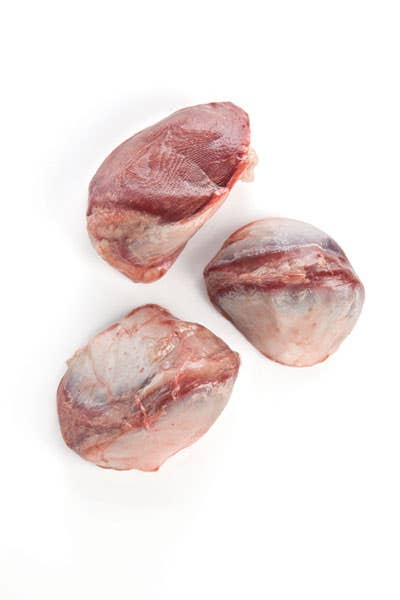
Wings
Along with the goose’s neck, the wings can be used to add flavor and body to stocks and soups. Back To: The Whole Goose: A Guide To Cooking With Goose »
Neck
The neck can be roasted alongside the bird and enjoyed for its supremely rich and flavorful meat. It also brings great flavor and viscosity to stocks. Back To: The Whole Goose: A Guide To Cooking With Goose »
Keep Reading
Continue to Next Story
